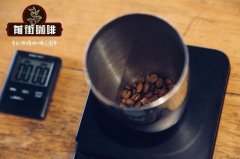What is the taste of Colombian coffee? where does Colombian coffee come from?

Professional coffee knowledge exchange more coffee bean information please follow the coffee workshop (Wechat official account cafe_style)
Qianjie-Columbia Coffee producing area and Flavor introduction
Huilan Huila
Located in the southwest of Colombia, it is one of the major coffee growing areas, accounting for 12% of Colombia's total coffee production. Because there are famous coffee cultivation places in Huilan area, the names of small areas become brand names and circulate. Coffee in Huilan area has strong flavors of nuts, chocolate and caramel. Coupled with the appropriate acidity can be called the best balance of premium boutique coffee.
Cauca of Cauca Province
Located in the southwest of Colombia, it accounts for 8% of Colombia's total coffee production. Is the Colombian coffee origin certification area, the average altitude of 1758 meters, the highest elevation can rise to 2100 meters, Cauca province is mountainous, the biggest difference in climate with other producing areas is the relatively large temperature difference. The temperature difference between day and night is an important factor in high-quality coffee. Low temperatures at night and relatively higher elevations slow down the growth of coffee, allowing beans to more fully absorb the nutrients of coffee fruits, as well as better acidity and commendable special sweetness of Coca Coffee.
Following the fine tradition of Colombia, Coca Coffee is picked manually and washed. In addition, in order to pursue good disease resistance and higher yield, many coffee producing areas have updated the old coffee varieties to new ones. Kaddura species are the most rare in Cauca producing areas, in addition, there are iron pickup and bourbon ancient species.
Na Linglong Narino
It is located in the southwestern part of Colombia and accounts for 3% of Colombia's total production. Na Linglong has the natural conditions for producing high-quality coffee, close to the equator, about 1 degree north latitude, sufficient light throughout the year; more than 1600 meters above sea level, and snow-capped peaks are not uncommon all the year round. Steep mountains and long and steep slopes bring temperature diversity. Warm and moist air rising from the canyon protects coffee grown at high altitude from the threat of frost, and coffee can be grown smoothly at a height of 2300 meters. Volcanic soil provides rich nutrients for coffee growth.
Nalinglong has a peak distribution of rainfall throughout the year, with a rainy season that lasts from October of that year to May of the following year, and the dry season lasts for June, July and August. However, even in dry months, warm currents from trade winds from the southern continent meet with cooler nights to produce water vapor that replenishes coffee trees. In Nalinglong, after the first rain in September, there will be a coffee flowering season. Starting in April of the following year, the harvest season begins one after another. In the high-altitude producing areas, the harvest season may last until August.
Knowledge giveaway: FNC represents more than 540000 coffee farmers' families in Colombia, and one in four rural people in Colombia is engaged in coffee-related work.
END
Important Notice :
前街咖啡 FrontStreet Coffee has moved to new addredd:
FrontStreet Coffee Address: 315,Donghua East Road,GuangZhou
Tel:020 38364473
- Prev

What brand of black coffee is Colombian coffee good to recommend?
Professional coffee knowledge exchange more coffee bean information please follow the coffee workshop (Wechat official account cafe_style) front street-Colombian coffee, black coffee knowledge introduction as the world's third largest coffee producer, there should not be micro-batch processing phenomenon. In fact, however, the appearance of micro-batch coffee in Colombia, as a characteristic product of small-volume countries, is both unexpected and unexpected.
- Next

How can I keep the coffee best? What are the common types of coffee packaging on the market?
Professional coffee knowledge exchange more coffee bean information Please pay attention to the coffee workshop (Wechat official account cafe_style) many friends on the question of how to preserve coffee beans, often very confused, can not finish the beans, how to do? Put it in the refrigerator? Put a sealed can? Vacuum bag? We generally recommend using a sealed bag to put the greenhouse is basically OK, normally freshly baked coffee
Related
- Beginners will see the "Coffee pull flower" guide!
- What is the difference between ice blog purified milk and ordinary milk coffee?
- Why is the Philippines the largest producer of crops in Liberia?
- For coffee extraction, should the fine powder be retained?
- How does extracted espresso fill pressed powder? How much strength does it take to press the powder?
- How to make jasmine cold extract coffee? Is the jasmine + latte good?
- Will this little toy really make the coffee taste better? How does Lily Drip affect coffee extraction?
- Will the action of slapping the filter cup also affect coffee extraction?
- What's the difference between powder-to-water ratio and powder-to-liquid ratio?
- What is the Ethiopian local species? What does it have to do with Heirloom native species?

